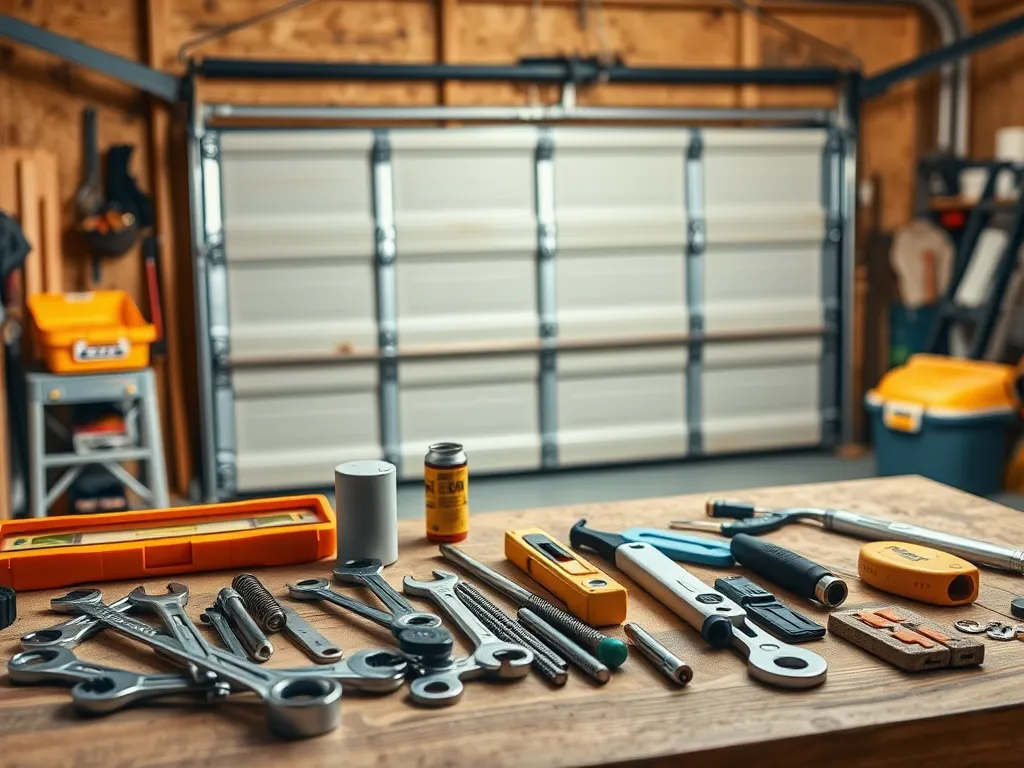Essential DIY Garage Door Repairs for Every Homeowner

DIY Garage Door Repairs: Your Complete Guide to Fixing Common Issues
DIY Garage Door Repairs can save you time and money while giving you a sense of accomplishment. Knowing how to tackle some common garage door issues yourself can help maintain the functionality and longevity of your garage door without the need to hire a professional service for every little problem.
Understanding the components of your garage door system is the first step in DIY Garage Door Repairs. The more familiar you are with the mechanics involved, the easier it will be to identify potential problems when they arise. From squeaky doors to faulty openers, many of these issues can be resolved with a little patience and the right tools.
Find the latest troubleshooting tips for managing your door issues effectively.
Before jumping into repairs, it's crucial to educate yourself on the common problems associated with garage doors. Some typical issues include misaligned tracks, worn-out springs, and dysfunctional openers, all of which can usually be fixed without needing a professional. With the right guidance, your DIY Garage Door Repairs can be both effective and safe.
In this article, we will provide you with essential information regarding the common issues you may face, the tools and materials required for effective repairs, step-by-step guides on performing various tasks, and preventive maintenance tips to ensure your garage door remains in optimal condition for years to come.
Regular lubrication maintenance is key to a smoothly operating door.
Finally, we'll discuss when it may be advisable to call a professional. Handling garage door issues yourself can be rewarding, but it’s important to know your limits and recognize when to seek expert help to avoid safety risks and costly mistakes.
Adhering to proper safety precautions can prevent many common accidents.
Common Garage Door Issues
Identifying a squeaky garage door is often the first sign that something may be wrong. Squeaking noises usually indicate a lack of lubrication in the hinges or rollers. Applying a silicone-based lubricant often solves this issue quickly and prevents further wear on components.
Troubleshooting garage door openers can be daunting but is often straightforward. Common problems include the remote control not working, a door that doesn't open or close completely, or a door that operates intermittently. Checking the batteries, ensuring nothing obstructs the sensors, and inspecting wiring connections can usually resolve these issues.
Fixing misaligned tracks is crucial for the smooth operation of the garage door. A misalignment can cause the door to stick or get stuck entirely. To realign, loosen the track mounting brackets, adjust the track, and retighten the bolts for a proper fit without forcing the door.
Understanding spring tension problems is vital, as these are among the most hazardous aspects of garage door mechanics. Springs help lift the heavy door, and if they're damaged or improperly adjusted, it could lead to serious injuries. It's essential to check them regularly and seek assistance if you’re unfamiliar with their workings.
Tools and Materials for DIY Repairs
Essential tools for garage door repairs typically include a socket set for removing bolts, screwdrivers (philips and flathead), pliers, and a level for ensuring proper alignment. A ladder may also be necessary for reaching overhead components safely.
Recommended materials for fixing doors often vary depending on the issue, but some common materials include replacement springs, rollers, lubricants, and new hardware like screws and nuts. Always choose high-quality materials to ensure the longevity of your repairs.
Safety gear for DIY repairs is crucial. Always wear safety glasses to protect your eyes from debris, and gloves to keep your hands safe from sharp edges. Hearing protection is also advised when using power tools or when the door operates loudly.
Garage door parts can be purchased at local hardware stores, specialty garage door suppliers, or online retailers. It's essential to select parts that are compatible with your specific garage door model to avoid further issues.
Step-by-Step Repair Guides
To replace garage door springs, start by ensuring safety; use safety goggles and gloves. Disconnect the opener, and manually open the door while holding it. Next, use a winding bar to release tension from the existing springs, replace them with new, compatible springs, and re-apply tension correctly to prevent damage or injury.
Step-by-step track alignment requires ensuring the garage door is properly closed. Use a level to check for any lean in the tracks. Loosen the track brackets while gently pushing the track back into alignment before tightening it securely in place to prevent further misalignment.
Fixing remote control issues often requires checking the batteries, reprogramming the remote, or inspecting the door sensors for obstructions. If these actions don’t work, it may require checking wiring or replacing the remote altogether.
Installing new garage door openers is a project that can be completed by following manufacturer instructions carefully. Typically, it involves mounting the opener on the ceiling, connecting it to the drive belt, and ensuring proper alignment with the door. Be sure to test the opener several times to ensure proper functionality.
Preventive Maintenance Tips
Regular lubrication of garage doors is vital to prolong their lifespan. Lubricate moving parts like rollers, hinges, and tracks at least once every season. This action prevents rust and ensures smooth operation.
Inspecting door seals and weatherstripping helps maintain energy efficiency. Check for cracks or deteriorated seals and replace them as needed to keep your garage insulated and free from unwanted pests.
Routine checks for wear and tear should become a habit. Look for frayed cables, cracked rollers, and worn-out springs during monthly inspections to identify issues before they escalate into costly repairs.
Tips to enhance garage door longevity include keeping the garage door reasonably clean, avoiding the use of excessive force when operating the door, regularly inspecting safety features like automatic reverse, and addressing any problems as soon as they arise.
When to Call a Professional
Signs you need professional help include persistent issues such as the door falling quickly, unusual noises during operation, or total malfunction of the door or opener. If repairs are beyond your skill level, it's safer to seek assistance.
Cost comparison between DIY and professional repairs reveals that while simple fixes can be done at a low cost, major repairs often warrant the investment in a professional's expertise, especially for safety-critical components like springs and openers.
Safety risks of DIY repairs cannot be overstated. Incorrect handling of springs or heavy doors can lead to injuries. Recognize your skill level to avoid putting yourself or others in danger.
Understanding warranty coverage can save you money. If your garage door is still under warranty, calling a professional might be required to keep that warranty valid. Always check the terms before proceeding with DIY repairs.
